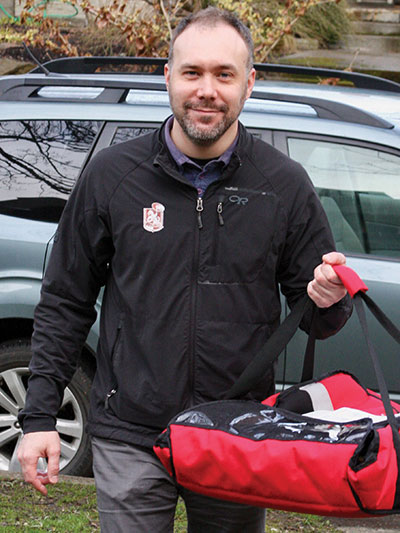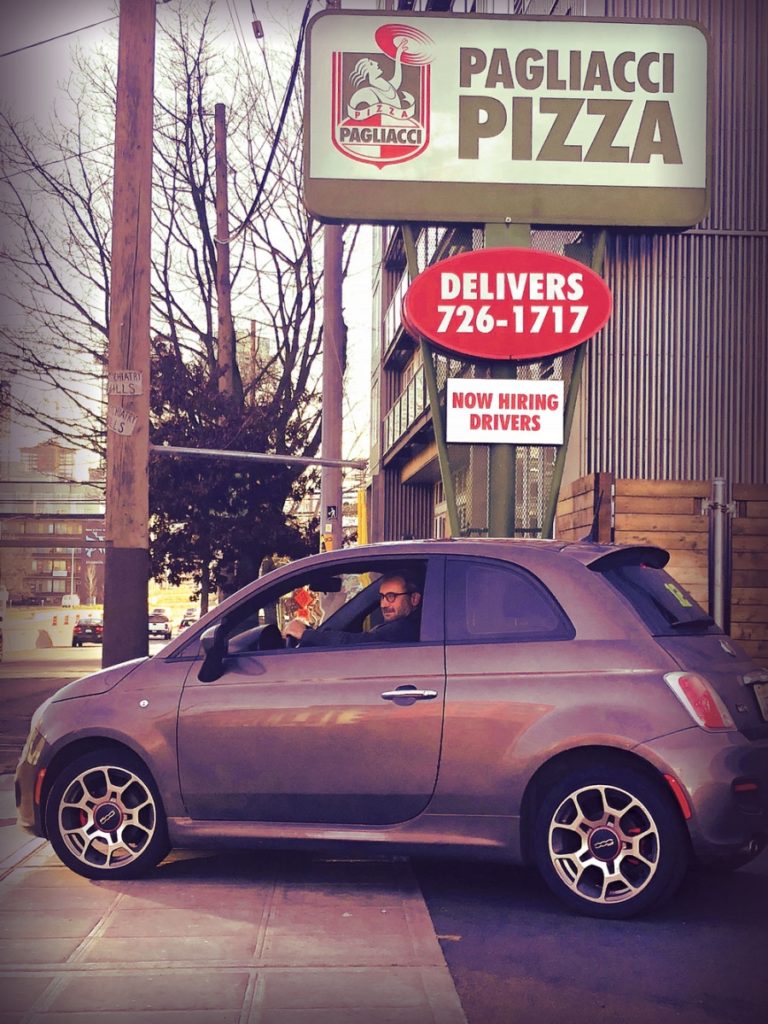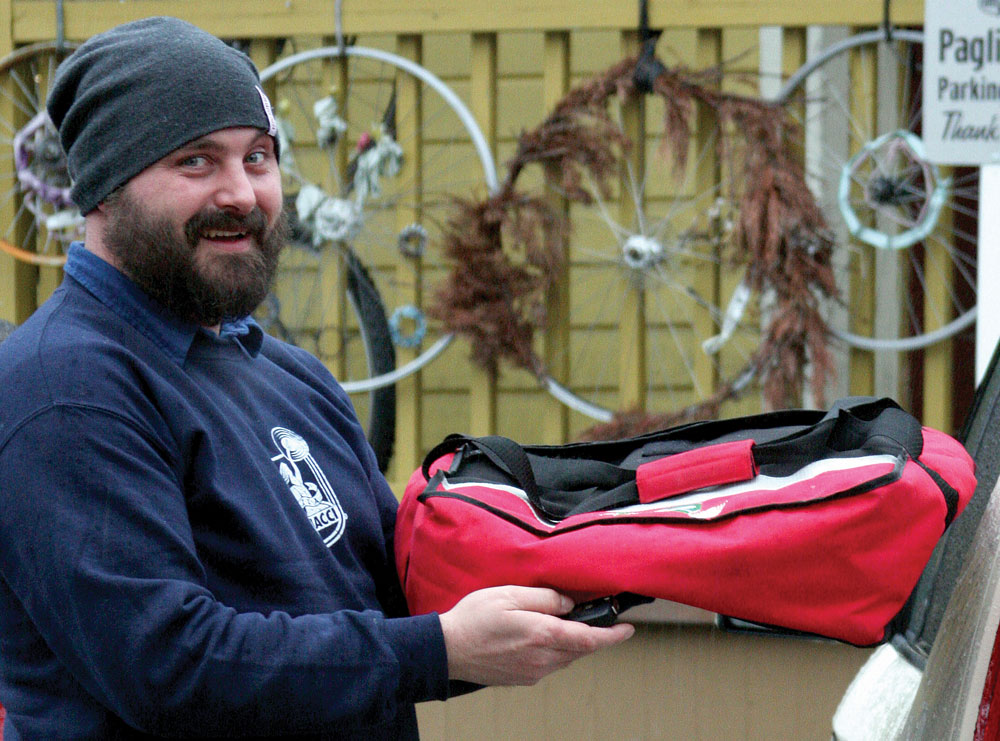Since its founding in 1979, Pagliacci Pizza has grown to 26 locations, all in the Seattle area. A big part of that success has been delivery, started 25-plus years ago in 1992 and now employing a whopping 270 drivers—all overseen by driver manager Sasha Mitronovas
“Years ago, we assessed that the majority of our customers interact with a delivery driver and that we knew very little about that transaction, so we decided we needed to invest in this interaction,” says Jeff Woodruff, Pagliacci’s VP of operations. “We sought out our friendliest, most engaged driver and challenged him to elevate the level of service at the door for our customers.”
So how exactly is this company raising the bar on delivery? Here, Mitronovas shares his successful strategies.
PMQ: What factors create great delivery?
 Mitronovas: We focus on:
Mitronovas: We focus on:
Speedy service. We staff a lot of drivers, especially during busy times. Critically, our delivery areas are set up for speedy delivery, so we sacrifice greater range. We don’t provide delivery to addresses that are more than about a 12-minute drive from a location. This allows our drivers to become experts in their small delivery areas, further reducing delivery times. And speedier delivery results in fresher, hotter, better food.
Accuracy. Our drivers are required to double-check the entire delivery prior to departure. Even if the kitchen hands the driver the wrong pizza, it’s the driver’s responsibility to catch it. Our drivers receive a bonus if their location does a good job preventing “driver-preventable complaints.” In addition, our drivers are required to verify the entire order at the door with their customer—and correct it if needed.
Employee empowerment. We ask our drivers to ensure that each customer is 100% satisfied with the delivery prior to leaving the customer’s door. If not, the driver has 100% authority to do whatever he needs to do to make the customer happy: call the store to get new product sent to the customer, sign the customer up for a gift card, take money off at the door (up to comping the entire order), or any combination of the three, no questions asked, even if the error originated with the driver.
Friendly drivers. When hiring drivers, our focus is to hire naturally friendly people who genuinely like serving others, not fast delivery drivers who don’t really care about their customers. Our hiring process helps identify delivery drivers who have great social skills and are people persons. For example, we stress making eye contact when sincerely thanking the customer at the end of the transaction. We don’t have our drivers follow scripts, just a defined procedure.
The big picture. Our drivers understand they are representing our brand at all times, not just while in front of a customer. That’s why we explicitly communicate, over and over, that safety and community relations are more important than quick delivery times. We look for opportunities to let someone cross the street, to slow down and move over when passing someone walking a dog, to drive extra slow if kids are out in the neighborhood, etc.
A dedicated call center. A call center handles all delivery calls (or helps an online customer who needs extra service). Highly trained customer service reps take great care of customers and will call our drivers if there’s an issue. They also take calls from our drivers—for example, if the driver is having trouble connecting with a customer—and provide assistance.
PMQ: What are some challenges?
Mitronovas: Hiring the right people to deliver and training them well, plus traffic and providing timely delivery during superbusy rush periods. Third-party delivery is also having a substantial impact. Until recently, delivery competition has consisted of mostly other pizza places or Chinese food. Suddenly, with very little warning, our delivery competition is every single restaurant in Seattle. We have seen a moderate decline in our delivery transactions but, fortunately, not a large impact.
The competition from third-party delivery has caused us to double down on our approach: friendlier and more professional drivers as well as service consistency. For example, every delivery order receives an accurate quote time that the customer can count on. We are the professionals, with 25 years of delivery experience in Seattle. If we send a customer a gift card as compensation, it comes with a hand-signed letter of apology from our owner. You simply need to outperform third-party delivery companies and earn the customer’s trust.
PMQ: How do you support your drivers?
 Mitronovas: We have bonuses aligning our drivers’ interests with what’s good for the company. Our driver-preventable error rate for all of 2017 was .11%—meaning we had one driver-preventable complaint out of roughly every 900 deliveries, including catching kitchen mistakes before leaving the store! We provide great training for our drivers, and a driver manager—that’s me—who’s in charge of delivery operations. Also, most of our locations have a driver lead, a driver who has shown natural leadership skills and receives additional compensation to help manage and represent the driver staff at that location.
Mitronovas: We have bonuses aligning our drivers’ interests with what’s good for the company. Our driver-preventable error rate for all of 2017 was .11%—meaning we had one driver-preventable complaint out of roughly every 900 deliveries, including catching kitchen mistakes before leaving the store! We provide great training for our drivers, and a driver manager—that’s me—who’s in charge of delivery operations. Also, most of our locations have a driver lead, a driver who has shown natural leadership skills and receives additional compensation to help manage and represent the driver staff at that location.
Do not think of your driver’s primary job as delivering food; that’s their secondary job. Their primary job is to be traveling brand representatives. We highly value our drivers, and we take care of them accordingly. We do peer reviews and offer great compensation, including medical, dental and vision insurance options and a 401(k) plan with a company match. Our drivers receive a gift for their birthday, holiday/Christmas and anniversary every year. We have drivers with 20-plus years of tenure, and many over five or 10 years. We have drivers who have bought houses or condos working exclusively as drivers for us. We’ve had drivers become general managers. I’ve been with the company for 22 years, and I spent my first seven years here as a delivery driver.
PMQ: How does your POS system help ensure great deliveries?
Mitronovas: We have our own software, which we use to do virtually everything. We own the copyright to the software and have a full-time developer on staff who updates on a weekly basis. It’s a huge advantage but very expensive. Obviously, smaller companies would struggle to make that kind of investment.
But what our POS system does for delivery is instantly let us know if a given address is in or out of our delivery area. It also tells the driver what “zone” the address is in—each store’s delivery area is broken into 25 to 40 zones to help drivers find addresses and managers to route deliveries together very quickly. We have accounts for every customer where we can make temporary or permanent notes regarding delivery preferences (i.e., “knock quietly, baby is sleeping”). We use the POS to give accurate delivery quote times. Our drivers are required to call in advance any time they will be 10 minutes or more past the quote time.
PMQ: How do you solicit feedback on delivery?
Mitronovas: Comment cards attached to delivery boxes; an online comment form; and callbacks from the phone center. We do ride-alongs with drivers, on which either I, a store manager or driver lead assesses the driver’s performance. If you’re wondering if your drivers are friendly and engaging with customers, go along with them and see for yourself. Also, every single driver-preventable complaint is followed up with the driver, one on one, by a manager. We document this follow-up and quickly see if a particular driver is struggling to fulfill our customers’ and our expectations.
Customers are constantly praising our drivers. We had a longtime driver pass away from a sudden heart attack, and one of his customers attended the service and spoke about how he had grown up with this driver delivering to him and how he was considered a part of the family. We’ve had drivers stop and assist a stranded motorist or get a first-aid kit from their car when a customer answered the door after just cutting himself. These things have actually happened!















